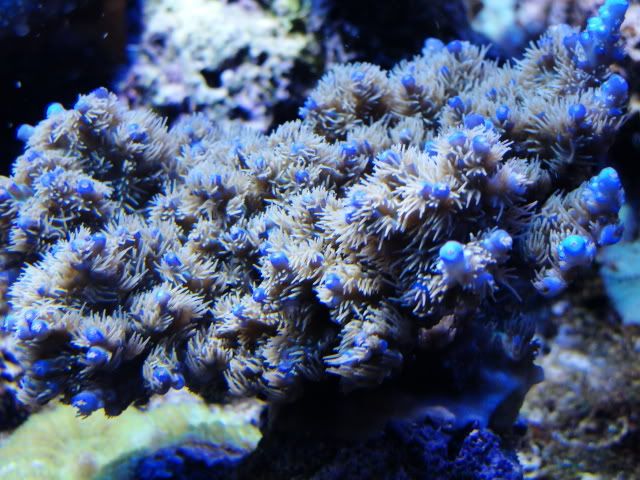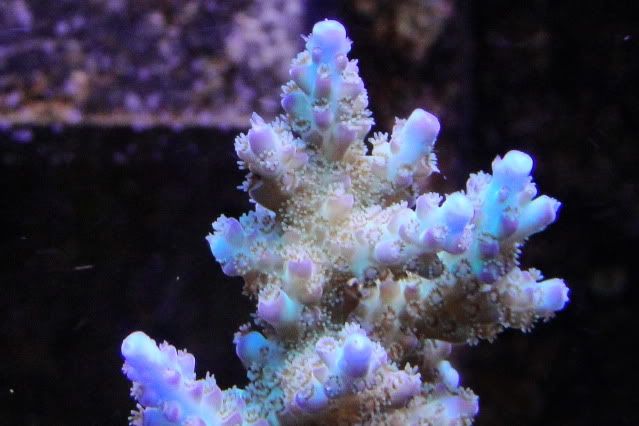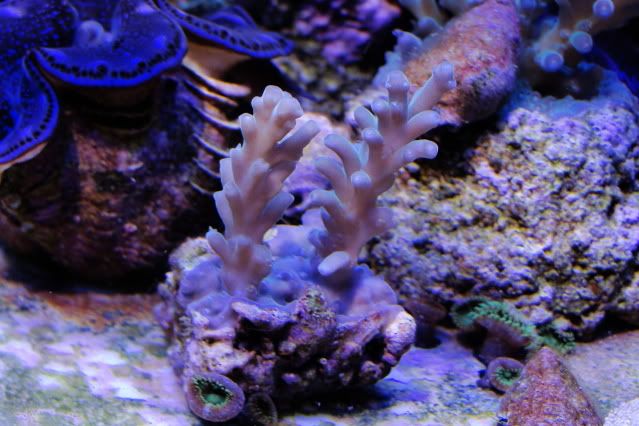
JimD
-
Posts
307 -
Joined
-
Last visited
-
Days Won
2
Content Type
Profiles
Forums
Store
Gallery
Events
Local Fish Stores
FAQ
Blogs
Downloads
Posts posted by JimD
-
-
Simply for a friendly and informative debate...
" Jim is right, you have to be careful with the kalk mixture as the pH in there is very high. So, start with a low dose of kalk in your ATO. I'd start with 1 tsp/gallon and see how it affects your tank - that is, what your pH and Alk to make sure they don't go sky high. Adjust up or down as needed. Max dose on kalk is 2 tsp/Gallon."
Since the effluent of Kalkwasser wheather mixed and settled or in flurry form is 12.4 either way, You're using much more kalk per dose using a flurry than you would if you mix and settle. You can theoreticly put a pound of kalk in a gallon of water and the Ph will still be 12.4 when saturated. The Ph wont increase, only decrease as you dilute the solution...
"
2. The slurry in the bottom is lethal to top off pumps, so what I did was I have the tube that goes into the reservoir resting about 1-1.5" from the bottom. This makes sure I don't suck up any slurry. When the water level is close to the bottom of the reservoir the end inlet of my tubing, that's when I mix up more kalk/Top off water.
Thats another benefit of using a reactor, no need to push the solution through a dosing pump, it gets forced out under pressure. What you're doing is working because you know the routine and needs of the tank. Basicly mixing the remaining kalk with fresh ro water, eventually settling. Id be curious what the Ph is as the resevoir empties. The pre-filter just throws good kalk down the drain. A well calibrated 24/7 Ph monitor is the only safe way to dose kalk via ATO... IMO!!!! Also lets you know when to recharge.
#4, Another reason for a reactor, an air tight mixing chamber,..
It really is what works best for you.
-
I have no experience with stirrers though. Would they prolong the life of your kalk mixture when using as top off?
No, the 'life' of the kalk is directly related to the ammount of evaporation which changes according to ambient humidity. Really guys, please ask questions and do some serious homework before using kalk, otherwise your heading for disater. Its not black and white and needs to be completely understood.
Aww Mikey, and here all this time I thought we were best buds, compadres, amigos, bros... Darn.. rotf..
-
Stirrers run the same way as reactors, they stir, then turn off via a timer then settle, they do not run constantly. I suggest you do a lot more research before you think about using kalkwasser. Ph is how you tell when to mix, when to settle and when to recharge. Im not just making this stuff up as I go, Ive been using kalk in one form or another for over ten years so I kinda know what Im doing.
"I don't think people who use it in their top-off reservoirs stir/mix it any more after initially adding it to the top-off water" What makes you "think" that? Do you know this for fact?
-
When using a kalk reactor, you want it to stir the solution for a period of time >then allow the solids to settle to the bottom<, you dont want to dose the slurry. Once the kalk has settled and the solution is clear then you want to set the reactor to dose top off. I think youll find that most people that use a reservoir do in fact mix, settle then dose. Keep in mind that kalk has an inherent Ph of 12.4 so you have to pay very close attention to your tank perameters, also, try to get your Ca and Alk levels where you want them using additives like Bionic and such, then use kalk to help maintain them...
-
Aquadome has the blue CO2 friendly tubing.
-
I called you that Sunday, left a message, never heard back.
-
Reeflux on a Coralvue e-ballast with vho/t-5 actinics.
-
The problem isnt adding the new sand, its removing the old. If you attempt to remove the old sand while the tank is inhabited, there is a serious risk of a major cycle that could wipe out your tank. I would strongly suggest that you empty the tank, saving the water, then remove the old crushed coral and replacing it with the new sand.. Thus the reason for the no "easy way to do it"... Ive done it before in the past with no issues. The other possibility would be to remove a small ammout in weekly intervals. Good luck.
-
Already some good information here, thanks! I have an unidentified crab that must have hitched with some live rock. He is brown, larger and rounder than an emerald, with redish eyes. Any guesses as to what it is? I can try to take a picture but he hides in his hole most of the time.
Check its claws, if they appear serrated, probably not good, if theres a 'pad' on the tips, it may be ok. I have a black and white one thats like 3" accross with pads on the tips of its claws, been in there for 5+ years and hasent been a problem. My personal preference would be the tiny blue legs.
-
Chips acro... This thing is insane!..

-
An older pic of my Pearlberry.. Love the way the blue tips glow...

-
I doubt thats anywhere near too much flow, I have 7000gph in my 60 gallon acro tank.

-
Those look like baby shrimp of some sort, do you have any in your tank?
-
What kind of fish and how large? Variations of this has always worked well....
-
If they've ever been run on a wave maker, they could have sustained some damage. Try putting a piece of soft airline on the shaft nearest the screen to restrict the props forward motion, just dont snug it up.
-
I dont know about 50 but 10-25 sounds about right. I guess it depends on the source water and the rejection rate of the membrane as Mikey said. My tds before DI is right at 12ppm. Also, if you plan to add DI, get a 1 micron sediment filter to help prolong the life of the DI media and RO cart..
-
Depending on the bulb/ballast combination, 20k's can be pretty weak, especially 250 watters. I think you could grow just about anything under this bulb and you 'may' be able to run it without actinics, I have a friend who does just that except with a Reeflux 12k. Heck, for 30 bucks its better than buying a new Reeflux for over twice the price then deciding you dont like it.
-
You can try vinegar but if its really crusty you might consider a 10:1 ratio of water and muriatic acid, just remove any metal parts like impeller shafts.
-
-
-
Looks very much like Acropora solitaryensis..
-
Ive had many anemonies do that, they seem to crave a cigarette and a cold beer afterwards.
 Make sure to run carbon and a partical filter if you have one, I had an anemone 'event' that wiped out a 100+ head Frogspawn before I could get to it..
Make sure to run carbon and a partical filter if you have one, I had an anemone 'event' that wiped out a 100+ head Frogspawn before I could get to it.. -
DFS 20k Lokani, two frags about 2" each, fully encrusted on live rock, $60... Couple of bonus green palys included. This pic is under 10k's and VHO's...

-
Although it might work, it may cause problems on down the road. I would think that it would be absorbed by the rock and sandbed if you have one and slowly release back causing abnormal fish behavior. Even with large water changes youd only be diluting the oil and I suspect it would take some time to be completely gone. Ive had tremedous luck controling Ich by O2 deprivation, raising the temerature will hinder its ability to thrive, feeding well along with good water perameters will usualy help, maybe even the temporary use of a good UV sterilizer.

How I killed Red Bugs
in Reef Keeping
Posted
lmao! Damm man! Thats cold!...
Cool video, well made, informative and kinda entertaining.